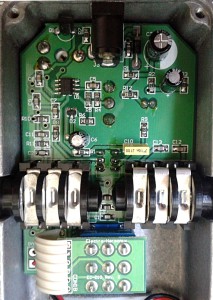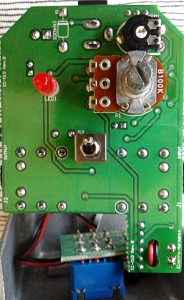What is it?
Electro Harmonix Doctor Q Envelope Follower from Nano series. Made in NYC, USA around late 00’s.
There are a lot of recycled designs in EHX catalog. This is one of those that has been around since 70’s and later made its way to nano series in cost effective and more usable sized enclosure. Of course the board design has been reduced to SMD as well to keep manufacturing cost low. The design on the other hand, remains very close to the original unit.
There are a few schematics available. The first one looks like original factory schematic, but the scan quality isn’t too great. I’d prefer to read the redrawn one. As the design has been rather popular in DIY crowd, there are number of additions available. Some of those add very good features and address the shortcomings of the original (like J. Orman’s Dr. Quack or Nurse Quacky that includes M. Hammer’s mods). In essence, the original design has input impedance on rather low level, resulting in possible pickup loading. That is, unless you have a buffered pedal placed before the Dr. Q. Other improvements are for stability of the trigger and for the effective range of the filter part. Original works fine, but for those building their copy, i’d suggest reading about the improvements before doing anything rash.
For the basic functionality, the incoming signal is splitted in two. The other part rushes to the filter for being modulated and the the other is sent for the trigger. Output is taken from the filter.
The board is standard and modern EHX design. Nothing to write home about, but it works. The range trimmer is rather sensitive. To get it perfectly in tune with your chosen instrument (bass, guitar, organ, whatever), you’ll need to spend some time screwing with it. You can tune it throught the board, so there’s no real need to detach the board from the enclosure. The main differences between this Nano unit and the vintage ones are the added power filtering and parallel polarity protection.
How does it sound?
Usable, but pretty squishy. The design contributes to some noise, which will be present at all the times when filter sweep activates. Squishy noises do, however, leave us with sort of an vintage feel to the sound. So we could argue that this is not a “studio quality” effect, but it’ll serve well for vintage vibes on stage. Sure. There are other envelope filters that you might want to consider over this, but if the effect isn’t used that much.. Then the price range and quality should be right on que. Yes. That’s an idiotic pun.




Leave a Reply